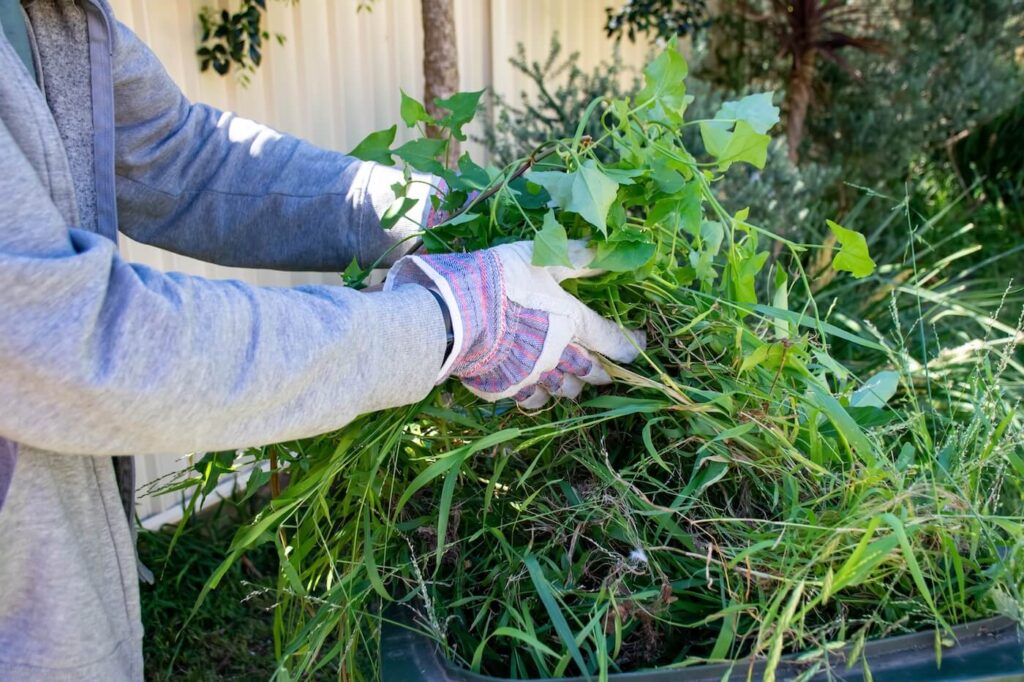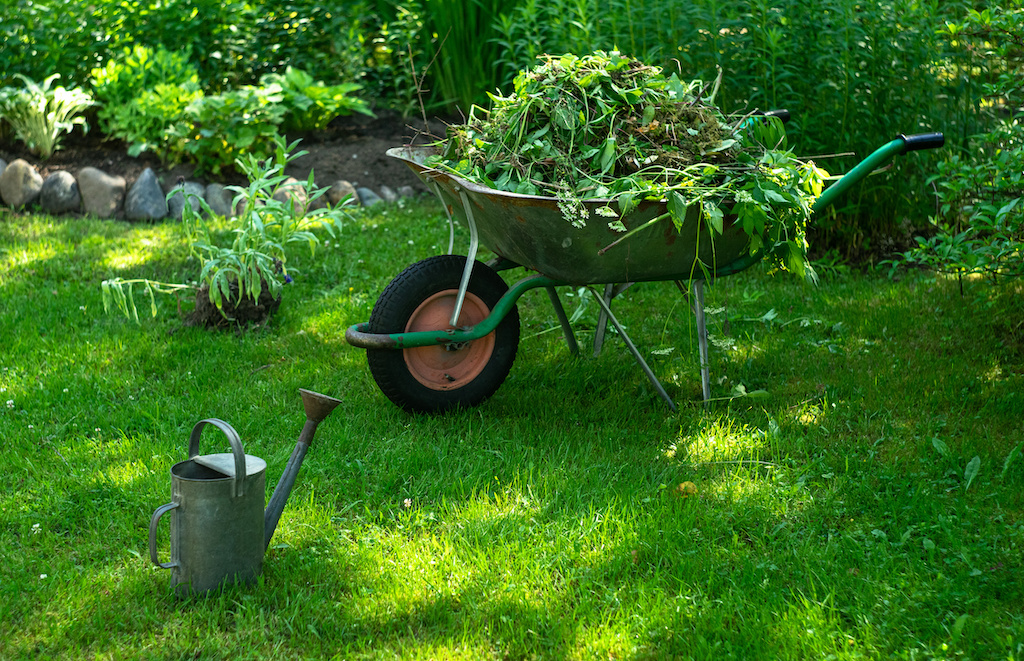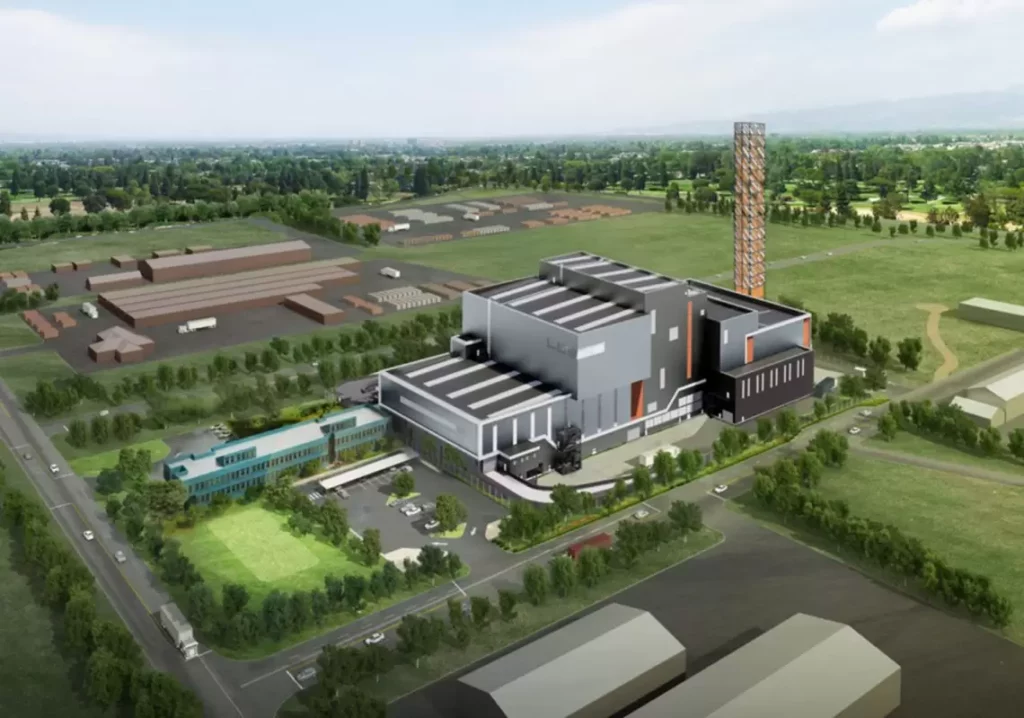How Do Tree Loppers in Sydney Contribute to Urban Climate Adaptation?
Professional tree loppers Sydney play a crucial role in the city’s fight against climate change. They are essential in maintaining and managing the urban forest, which helps keep temperatures down and communities livable. These experts do much more than just trim branches—they actively influence how Sydney adapts to rising temperatures and extreme weather events.
Their work has a direct impact on three critical aspects of urban climate adaptation:
- Tree health maintenance: Regular pruning and care ensure trees remain vigorous enough to provide maximum cooling and air quality benefits.
- Canopy cover expansion: Strategic planting and maintenance increase shade coverage across streets and public spaces.
- Biodiversity support: Proper tree management creates and preserves habitats for native wildlife.
Through expert urban forest management, tree loppers Sydney professionals enable the city’s green infrastructure to function as a natural climate solution. They assess local conditions, select climate-resilient species, and remove hazardous trees only when necessary—balancing safety with the imperative to maintain green cover. This specialised knowledge makes them indispensable partners in building a city capable of withstanding a warming future..

What Is the Urban Heat Island Effect and How Do Trees Help Mitigate It?
The urban heat island effect occurs when cities experience significantly higher temperatures than surrounding rural areas due to heat-absorbing surfaces like concrete, asphalt, and buildings. Sydney’s dense urban environment traps and radiates heat, creating temperature differences of up to 10°C between the city centre and outer suburbs during summer months.
Built environments replace natural landscapes with materials that absorb and retain solar radiation throughout the day, releasing this stored heat well into the night. Dark surfaces such as roads and rooftops can reach temperatures exceeding 60°C on hot days, whilst the lack of vegetation means minimal natural cooling occurs. This creates uncomfortable, sometimes dangerous conditions for residents, particularly during heatwaves when vulnerable populations face increased health risks.
The Natural Cooling Power of Trees
Trees combat the urban heat island effect through two primary mechanisms that make them essential climate adaptation tools. The canopy provides direct shade, blocking up to 90% of solar radiation from reaching surfaces beneath. This immediate tree shade benefits pedestrians, buildings, and outdoor spaces by reducing surface temperatures by 20-45°C compared to unshaded areas.
The second cooling mechanism—evapotranspiration—works like natural air conditioning. Trees absorb water through their roots and release it as water vapour through their leaves, a process that requires energy and therefore draws heat from the surrounding air. A single mature tree can transpire hundreds of litres of water daily, producing a cooling effect equivalent to ten room-sized air conditioners running for 20 hours.
Quantifiable Temperature Reductions
Research specific to Sydney demonstrates that streets with 30% canopy cover experience temperatures 2-4°C lower than streets with minimal tree coverage. Cooling urban areas through strategic tree placement reduces the demand for mechanical cooling in nearby buildings, cutting energy consumption by up to 30% during peak summer periods.
The cumulative effect of widespread tree coverage creates microclimates within the city. Areas with established tree canopies maintain more stable temperatures, experience less extreme heat spikes, and provide refuge spaces where residents can escape dangerous heat conditions. These cooler zones become critical during climate events, offering protection that built infrastructure alone cannot provide.
Tree loppers play a vital role in maintaining this cooling infrastructure by ensuring trees remain healthy enough to deliver their full potential benefits. Their work not only preserves the immediate cooling effects of trees but also contributes to long-term climate resilience in urban settings. As highlighted in a study from PMC, maintaining tree health is crucial for maximizing these environmental benefits.
Why Are Tree Loppers Essential for Maintaining Healthy Urban Trees?
Tree loppers maintain the structural integrity and vitality of Sydney’s urban forest through expert pruning and targeted tree maintenance. Without regular professional intervention, urban trees face increased risks of disease, structural failure, and premature decline that compromise their ability to deliver critical ecosystem services.
1. Regular pruning benefits extend far beyond aesthetics.
Qualified tree loppers remove dead, diseased, or damaged branches that could fall during storms, protecting public safety whilst preserving the tree’s overall health. This selective removal allows trees to redirect energy towards healthy growth, strengthening their resilience against pests, diseases, and extreme weather events that climate change intensifies.
2. Proper pruning techniques respect the tree’s natural biology
Tree health depends on proper pruning techniques that respect the tree’s natural biology. Professional tree loppers understand growth patterns, wound response, and species-specific requirements. They make precise cuts that heal quickly, preventing entry points for pathogens whilst maintaining the tree’s structural balance. Poor pruning practices—such as topping or excessive crown reduction—can permanently damage trees, reducing their lifespan and diminishing their capacity to cool urban spaces
3. The timing and frequency of tree maintenance directly impacts canopy longevity
The timing and frequency of tree maintenance directly impacts canopy longevity. Tree loppers assess individual trees to determine optimal pruning schedules based on:
- Species-specific growth rates and seasonal dormancy periods
- Proximity to buildings, power lines, and pedestrian areas
- Current health status and structural condition
- Climate stress indicators such as drought damage or heat scorch
This tailored approach ensures trees receive appropriate care without over-pruning, which can stress trees and temporarily reduce their cooling capacity through evapotranspiration.
4. Balancing safety requirements with canopy preservation
Tree loppers balance safety requirements with canopy preservation. When branches overhang roads or interfere with infrastructure, selective pruning maintains clearance whilst retaining maximum foliage. This strategic approach keeps green cover intact—essential for urban cooling—whilst eliminating hazards that might otherwise necessitate complete tree removal.
5. Extending tree lifespans through professional maintenance
Professional tree maintenance extends tree lifespans by decades. Mature trees provide exponentially greater ecosystem services than young plantings, storing more carbon, cooling larger areas, and supporting diverse wildlife populations. By keeping established trees healthy and structurally sound, tree loppers protect Sydney’s investment in urban forestry and ensure continuous climate adaptation benefits.
The expertise tree loppers bring to urban
How Do Tree Loppers Support Increasing Canopy Cover in Sydney?
Tree loppers directly support canopy cover expansion in Sydney through strategic tree selection, placement, and ongoing maintenance that ensures young trees establish successfully. Canopy cover—the layer of leaves, branches, and stems that provide shade when viewed from above—acts as a natural cooling system, reducing surface temperatures by up to 5°C in well-shaded areas compared to exposed streets.
The Cooling Power of Strategic Canopy Placement
Urban forestry professionals understand that canopy cover effectiveness depends on more than just planting numbers. Tree loppers assess site-specific conditions including:
- Solar exposure patterns throughout the day and across seasons
- Pedestrian traffic flows to maximise shade benefits where people gather
- Building orientations to reduce heat absorption on western and northern facades
- Existing infrastructure such as underground utilities and overhead power lines
This assessment ensures every tree planted contributes meaningfully to urban cooling whilst avoiding future conflicts that might require premature removal.
Climate-Resilient Species Selection
Tree planting strategies for Sydney’s changing climate require species that can withstand prolonged heatwaves, irregular rainfall patterns, and intense storm events. Tree loppers work with arborists to identify trees that offer:
Drought tolerance through deep root systems and water-efficient foliage, such as Eucalyptus saligna (Sydney Blue Gum) and Angophora costata (Smooth-barked Apple), which thrive in Sydney’s sandy soils whilst providing dense canopy coverage.
Storm resilience through flexible branching structures that bend rather than break during severe weather, reducing maintenance costs and preserving established canopy.
Biodiversity value by selecting native species that support local fauna, creating ecological corridors throughout urban areas that strengthen ecosystem health. Research indicates that these practices not only enhance the urban landscape but also contribute significantly to the overall health of our environment【1†source】.
Maintenance That Protects Growing Canopy
Young trees require specialised care during their establishment phase—typically the first 3-5 years after planting. Tree loppers provide:
Formative pruning that shapes developing canopies for optimal shade coverage whilst maintaining structural integrity, preventing weak branch attachments that could fail as trees mature【2†source】.
Crown lifting on established trees to allow adequate clearance for pedestrians and vehicles without compromising overall canopy shape or size.
What Tree Management Strategies Are Used to Adapt to Future Climate Conditions?
Sydney’s tree management strategies prioritise climate-resilient trees that can withstand intensifying environmental stressors. These approaches focus on selecting species proven to survive heatwaves exceeding 40°C, extended drought periods, and sudden flooding events that are becoming more frequent across the city.
Tree loppers conduct detailed site assessments before recommending species, examining soil composition, drainage patterns, and microclimate conditions specific to each location. This groundwork determines whether a site requires drought-tolerant species like Eucalyptus sideroxylon (Red Ironbark) or flood-adapted trees such as Melaleuca quinquenervia (Broad-leaved Paperbark) that thrive in waterlogged conditions.
Species Selection for Extreme Weather Resilience
The choice of climate-appropriate species follows three critical criteria:
- Heat tolerance: Trees must maintain photosynthesis and structural integrity during prolonged heatwaves without excessive water demand
- Drought resistance: Deep-rooting species that access groundwater reserves whilst requiring minimal irrigation once established
- Flood adaptation: Species with root systems that tolerate temporary waterlogging without developing root rot or structural instability
Native species receive preference because they’ve evolved alongside Sydney’s climate patterns and support local ecosystems. Corymbia maculata (Spotted Gum) exemplifies this approach—tolerating both dry spells and heavy rainfall whilst providing habitat for native birds and insects.
Soil and Microclimate Assessment Techniques
Tree loppers evaluate multiple environmental factors before planting or maintaining trees:
- Soil testing reveals pH levels, nutrient availability, and drainage capacity. Compacted urban soils often require amelioration to support root development, particularly for species requiring good drainage during wet periods.
- Microclimate mapping identifies heat hotspots where temperatures spike due to concrete surfaces and limited airflow. These zones receive priority for shade-providing species that deliver maximum cooling benefits.
- Water availability analysis determines whether sites can support trees through natural rainfall or require supplementary irrigation systems. This assessment prevents planting water-intensive species in locations where they’ll struggle during drought restrictions.
How Do Tree Loppers Align Their Work With the City of Sydney’s Street Tree Master Plan?
Tree loppers execute the Street Tree Master Plan Sydney by providing the specialised care that transforms policy objectives into tangible urban forestry outcomes. The plan sets ambitious targets to increase canopy cover from 15.5% to 27% by 2050, prioritising climate-resilient species that can withstand Sydney’s intensifying heatwaves, droughts, and storm events.
Indigenous species planting forms the cornerstone of the master plan’s approach to climate adaptation. Native trees such as Eucalyptus saligna (Sydney Blue Gum), Angophora costata (Smooth-barked Apple), and Melaleuca quinquenervia (Broad-leaved Paperbark) offer superior drought tolerance and support local wildlife populations. Tree loppers understand the growth patterns, structural requirements, and maintenance needs of these indigenous species, ensuring they establish successfully in challenging urban conditions.
Implementing Urban Forestry Goals Through Expert Care
Professional tree loppers translate the master plan’s vision into reality through several critical functions:
- Formative pruning of young street trees to develop strong branch architecture that withstands severe weather
- Selective crown thinning to reduce wind resistance whilst maintaining shade provision
- Root zone management to prevent infrastructure damage without compromising tree health
- Health assessments to identify stress indicators early and implement corrective measures
The master plan emphasises right tree, right place principles that match species characteristics with site conditions. Tree loppers assess soil pH, drainage, overhead clearances, and underground services before recommending species selections. This expertise prevents costly failures and ensures newly planted trees contribute to urban forestry goals for decades.
Maintenance Protocols Supporting Long-Term Canopy Objectives
Street trees require ongoing professional attention to achieve their full climate adaptation potential. Tree loppers conduct cyclical inspections that identify structural defects, pest infestations, or disease symptoms before they compromise tree viability. Their interventions—whether removing deadwood, treating fungal infections, or correcting growth imbalances—extend tree lifespans and maximise ecosystem service delivery.
The master plan’s focus on increasing canopy cover relies on retention
How Tree Loppers Contribute to Biodiversity and Urban Liveability
Tree loppers play a vital role in maintaining urban biodiversity by caring for trees that provide essential habitats for local wildlife such as birds, possums, insects, and microbats. Instead of cutting down trees, they use selective pruning techniques to preserve branches with hollows and areas with dense canopies where animals build their nests, find food, and seek shelter. This thoughtful approach ensures that Sydney’s urban forest continues to support species like rainbow lorikeets, grey-headed flying foxes, and native bees that rely on mature trees for survival.
Habitat Maintenance
The expertise of professional tree loppers directly contributes to the preservation of habitats across Sydney’s urban landscape. When removing deadwood from trees, they carefully evaluate whether the fallen branches have ecological significance—dead branches often harbour insects that serve as food for native birds, while tree hollows in older trees become nesting sites for cavity-nesting species. By leaving these features intact whenever it is safe to do so, tree loppers strike a balance between ensuring public safety and meeting the needs of wildlife conservation.
Liveability Benefits
The positive impact of well-maintained urban trees on the liveability experienced by Sydney residents goes beyond just looking good. Streets lined with healthy trees create shaded pathways that encourage people to spend time outdoors, reduce noise pollution through sound absorption, and promote mental well-being by providing visual access to nature. Tree loppers play a crucial role in making sure these benefits are available to everyone by keeping tree branches clear of pedestrian walkways while also maximising the spread of canopies for shade coverage.
Resilient Urban Ecosystems
By implementing strategic tree management practices, tree loppers help enhance ecological diversity within cities and create resilient ecosystems that can better adapt to climate challenges. They focus on working with native plant species that attract specific pollinators and seed dispersers, thereby strengthening food webs within urban areas. This increased biodiversity supports natural pest control mechanisms, reduces reliance on chemical interventions, and fosters self-sustaining green spaces that require less intensive upkeep over time.
Community Wellbeing
The link between healthy trees and the overall well-being of communities becomes evident in suburbs where professional lopping services are used to maintain diverse populations of trees. Areas with a variety of tree species—such as eucalypts hosting koalas or paperbarks providing habitat for waterbirds—offer richer sensory experiences and opportunities for learning among residents. Children who grow up near biodiverse urban forests develop a stronger understanding of environmental issues, while adults benefit from improved air quality and temperature regulation.
The role played by tree loppers in Sydney’s efforts towards adapting to climate change becomes clear when we look at their work promoting biodiversity: healthy and diverse urban forests offer natural solutions for combating climate challenges that mechanical cooling systems cannot fully address.

Conclusion
Tree loppers in Sydney are essential for helping the city adapt to climate change. Their work goes beyond just taking care of trees; it directly impacts Sydney’s ability to handle rising temperatures, severe weather, and environmental challenges.
Here’s how tree loppers make a difference:
- Cooling urban areas: By keeping tree canopies healthy, they help reduce the heat island effect.
- Ensuring public safety: They assess and trim trees that could be dangerous.
- Protecting biodiversity: They create habitats for native wildlife in cities.
- Supporting sustainability: They choose tree species and manage them in ways that are friendly to the climate.
Creating a sustainable Sydney requires everyone to pitch in. You can help by supporting local urban forestry projects, advocating for more trees in your neighbourhood, and getting involved with council tree planting initiatives. Each well-maintained tree cared for by experts is an investment in adapting to climate change—keeping our communities safe now and ensuring a livable city for future generations.
To make sure your property is part of Sydney’s green infrastructure network, reach out to certified tree loppers.
Learn about: Tree Stump Removal in Sydney and the Philosophy of Erasing Nature’s Traces
FAQs
Tree loppers maintain healthy trees, expand canopy cover, and support biodiversity, which helps the city manage rising temperatures, extreme weather, and urban environmental challenges.
The urban heat island effect occurs when cities are hotter than surrounding areas due to heat-absorbing surfaces. Trees provide shade and cool the air through evapotranspiration, reducing surface temperatures by several degrees.
Regular pruning by experts prevents disease, structural failure, and premature decline, ensuring trees continue providing cooling, air filtration, and habitat for wildlife.
They strategically select, plant, and maintain trees—considering site conditions, species suitability, and climate resilience—to maximize shade, cooling, and long-term growth.
Tree loppers prioritize climate-resilient species that tolerate heat, drought, and flooding, assess soil and microclimate, and implement irrigation and maintenance plans for long-term survival.
They execute pruning, root management, and species selection that follow the plan’s objectives, increasing canopy cover, supporting native biodiversity, and ensuring trees thrive under urban stressors.
By selectively pruning and maintaining trees, they preserve habitats such as hollows and dense canopies, supporting native birds, insects, and small mammals across the city.
Trees provide shaded walkways, reduce noise, improve air quality, regulate temperatures, and enhance mental wellbeing, making streets and parks more pleasant and safe.
Mature trees offer greater cooling, carbon storage, and habitat value than young trees. Tree loppers ensure these trees remain healthy, maximizing ecosystem benefits over decades.
Residents can participate in tree planting initiatives, support local urban forestry projects, and advocate for more green spaces, complementing the work of professional tree loppers in climate adaptation.

